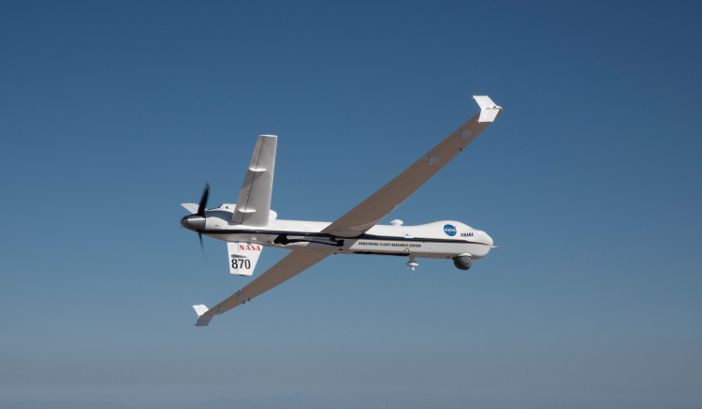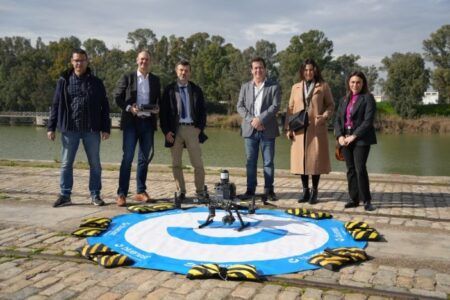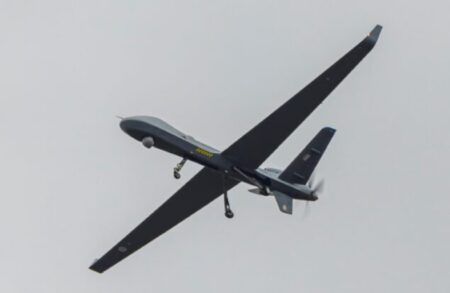NASA’s remotely-piloted Ikhana aircraft has flown its first mission in the USA’s National Airspace System without a safety chase aircraft to demonstrate a suite of detect and avoid technologies.
Ikhana, which is based at the agency’s Armstrong Flight Research Center in Edwards, California flew the mission on June 12, 2018.
Ed Waggoner, NASA’s integrated aviation systems program director said, “This is a huge milestone for the team on our Unmanned Aircraft Systems Integration in the National Airspace System project. We worked closely with our Federal Aviation Administration colleagues for several months to ensure we met all their requirements to make this initial flight happen.”
The Ikhana is a MQ-9 Predator B drone acquired by NASA in November 2006 to support Earth science missions and to act as a testbed to develop capabilities and technologies to improve the utility of unmanned drones.
According to NASA, the technology being trialled in Ikhana could be scaled down for use in other general aviation aircraft in the future.
The Ikhana aircraft was equipped with an airborne radar developed by General Atomics Aeronautical Systems, a Honeywell Traffic Alert and Collision Avoidance System, a Detect and Avoid Fusion Tracker, and an Automatic Dependent Surveillance-Broadcast capability. This surveillance technology makes the aircraft capable of determining its position via satellite navigation and periodically broadcasts this information so other aircraft can track it.
The flight took off from Edwards Air Force Base in California and entered controlled air space almost immediately. Ikhana flew into the Class-A airspace, where commercial airliners fly, just west of Edwards at an altitude of about 20,000ft. The aircraft then turned north toward Fresno, requiring air traffic control to be transferred from the Los Angeles Air Route Traffic Control Center to the Oakland Air Route Traffic Control Center. On the return trip, the pilot headed south toward Victorville, California, requiring communication control to be transferred back to Los Angeles.
During the return flight, the pilot began a gentle descent over the city of Tehachapi, California, into Class E airspace, about 10,000ft, where general aviation pilots fly. The pilot initiated an approach into Victorville airport at 5,000ft, coordinating in real time with air traffic controllers at the airport. After successfully executing all of these milestones, the aircraft exited the public airspace and returned to its base at Armstrong.
Special permission was granted to NASA by the FAA for Ikhana’s pilot to use the latest detect and avoid technology and remotely pilot the aircraft from the ground. NASA has worked with industry partners and the FAA for several years to develop a standard for detect and avoid technologies.
The flight was the first remotely-piloted aircraft to use airborne detect and avoid technology to meet the intent of the FAA’s “see and avoid” rules, with all test objectives successfully accomplished.
“We are flying with a suite of sophisticated technology that greatly enhances the safety capabilities of pilots flying large unmanned aircraft in the National Airspace System,” said Scott Howe, a test pilot at Armstrong. “We took the time to mitigate the risks and to ensure that we, as a program, were prepared for this flight.”





